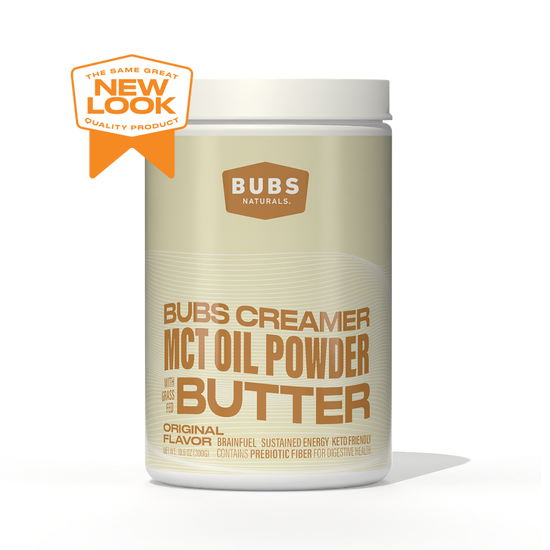Table of Contents
- Introduction
- What is Non-Dairy Creamer?
- How Long Does Non-Dairy Creamer Last?
- How to Tell If Non-Dairy Creamer Has Gone Bad
- Best Practices for Storing Non-Dairy Creamer
- Frequently Asked Questions (FAQs)
- Conclusion
Introduction
Have you ever found a forgotten bottle of non-dairy creamer lurking at the back of your pantry, and wondered, "Is it still good?" You’re not alone. Many of us have experienced the challenge of navigating expiration dates, especially when it comes to non-dairy products. Understanding how long these creamers last, how to store them properly, and whether they truly expire can save you from a potential coffee disaster.
Non-dairy creamers have become increasingly popular alternatives to traditional dairy options, catering to those with lactose intolerance, dietary restrictions, or simply a preference for plant-based choices. While their convenience and versatility make them a staple for many coffee lovers, it raises an important question: Does non-dairy creamer expire? In this blog post, we’ll explore the shelf life of non-dairy creamers, factors that influence their longevity, how to tell if they’ve gone bad, and best storage practices to keep your creamer fresh for as long as possible.
By the end, you’ll have a comprehensive understanding of non-dairy creamers and feel confident in your ability to assess and utilize these products in your daily routine. Together, we’ll dive deep into the world of non-dairy creamers—let’s get started!
What is Non-Dairy Creamer?
Non-dairy creamers are plant-based alternatives to traditional creamers made from dairy. They are typically composed of various ingredients, including vegetable oils, stabilizers, emulsifiers, and sometimes sweeteners, flavorings, and colorings. Common types of non-dairy creamers include those made from soy, almond, coconut, and oat milk.
Types of Non-Dairy Creamers
-
Liquid Non-Dairy Creamers: These are often found in both refrigerated and shelf-stable forms. Refrigerated versions usually contain more natural ingredients but have a shorter shelf life, while shelf-stable varieties undergo processing to extend their usability.
-
Powdered Non-Dairy Creamers: These are made with dehydrated ingredients and are typically more shelf-stable than their liquid counterparts. They can be stored without refrigeration, making them a convenient option for many households.
-
Single-Serve Pods: Often used in coffee shops or for convenience at home, these pods contain liquid non-dairy creamer and can be stored at room temperature until opened.
The Appeal of Non-Dairy Creamers
The rise of non-dairy creamers can be attributed to various factors, including:
- Dietary Preferences: With an increasing number of people adopting vegan or plant-based diets, non-dairy creamers provide a suitable alternative to traditional dairy.
- Lactose Intolerance: Many individuals who are lactose intolerant find non-dairy options more palatable and easier on the stomach.
- Versatility: Non-dairy creamers come in a wide range of flavors and formulations, allowing consumers to experiment with different tastes in their favorite coffee beverages.
How Long Does Non-Dairy Creamer Last?
The shelf life of non-dairy creamer varies significantly based on its type and storage conditions. Understanding these factors can help you make the most of your creamer without the worry of it spoiling prematurely.
Unopened vs. Opened
-
Unopened Non-Dairy Creamer: Generally, unopened liquid non-dairy creamers can last anywhere from 6 to 12 months past the printed expiration date if stored correctly. Powdered non-dairy creamers can last even longer, often up to two years when kept in a cool, dry place.
-
Opened Non-Dairy Creamer: Once opened, liquid non-dairy creamers need to be refrigerated and typically last about 7 to 10 days. Powdered versions can last several months if kept sealed and stored away from moisture.
Factors Influencing Shelf Life
-
Ingredients: The specific ingredients used in a non-dairy creamer can impact its longevity. Creamers with minimal preservatives may have a shorter shelf life than those with stabilizers and preservatives.
-
Storage Conditions: Proper storage is crucial. Non-dairy creamers should ideally be stored in a cool, dark place for unopened products and in the refrigerator for opened liquid creamers. Exposure to light, heat, and humidity can accelerate spoilage.
-
Package Integrity: Ensure that the packaging is intact and there are no signs of damage or punctures, as this can lead to contamination and spoilage.
Key Takeaway
To maximize the shelf life of your non-dairy creamer, store it in a cool, dry place and adhere to the guidelines for opened and unopened products. Always check the expiration date and consider the type of creamer you have to understand its longevity fully.
How to Tell If Non-Dairy Creamer Has Gone Bad
Knowing how to identify spoilage in non-dairy creamers is essential to avoid any unpleasant surprises in your coffee. Here are the primary indicators that your creamer may have expired:
1. Smell
A sour or off-putting odor is one of the most obvious signs that your creamer has gone bad. Fresh non-dairy creamer should have a pleasant, neutral smell. If it smells rancid or acidic, it’s best to discard it.
2. Flavor
If the creamer appears fine but tastes off or sour, it’s a clear indication that it has spoiled. Always perform a taste test if you’re unsure, but err on the side of caution—if in doubt, throw it out.
3. Texture
Liquid creamers should have a smooth, creamy texture. If you notice any clumps, separation, or curdling, it’s likely gone bad. Powdered creamers should be free of clumps and should not feel moist or sticky.
4. Appearance
Visual changes can also indicate spoilage. Discoloration, a change in consistency, or the presence of mold are all clear signs that the creamer should not be consumed.
Best Practices for Storing Non-Dairy Creamer
To ensure longevity and maintain the quality of your non-dairy creamers, follow these best practices:
1. Check Expiration Dates
Always take note of the expiration date on non-dairy creamers. While they may last beyond this date if stored properly, it’s advisable to use them within the indicated timeframe to ensure optimal taste and quality.
2. Store Properly
-
Liquid Non-Dairy Creamers: Once opened, store these in the refrigerator, ideally in the main compartment rather than the door, as the door experiences more temperature fluctuations.
-
Powdered Non-Dairy Creamers: Keep these in a cool, dry place away from moisture and heat. Seal the container tightly after each use to prevent moisture infiltration.
3. Avoid Temperature Fluctuations
Consistent temperature is key. Avoid storing creamers in areas that experience frequent temperature changes, such as near the stove or in the pantry next to items that generate heat.
4. Use Clean Utensils
When scooping powdered creamer, always use a clean, dry spoon to prevent contamination. This will help prolong the shelf life and maintain the quality of your powdered non-dairy creamer.
Frequently Asked Questions (FAQs)
1. Can I consume non-dairy creamer after the expiration date?
While many non-dairy creamers can be safe to consume shortly after the expiration date, it’s essential to assess their smell, taste, and appearance. If they exhibit any signs of spoilage, it’s best to discard them.
2. How can I extend the shelf life of my non-dairy creamer?
Proper storage is the key to extending shelf life. Store unopened products in a cool, dark place and refrigerate opened liquid creamers. Keeping them sealed and away from moisture will also help maintain their quality.
3. What if I accidentally freeze my non-dairy creamer?
Freezing non-dairy creamers is not generally recommended as it may affect the texture and quality once thawed. If you do freeze it, thaw in the refrigerator rather than at room temperature to avoid temperature fluctuations that can promote spoilage.
4. Are there any health risks associated with consuming expired non-dairy creamer?
While consuming small amounts of expired non-dairy creamer may not lead to serious health issues, it’s best to avoid doing so. Spoiled creamer can cause digestive discomfort, including bloating and nausea.
5. How do I know if powdered non-dairy creamer is still good?
Powdered non-dairy creamers can last a long time, but if they are clumpy, have an off smell, or have visible signs of moisture or mold, they should be discarded.
Conclusion
In summary, understanding the shelf life and proper storage of non-dairy creamers is crucial for maximizing their usability and ensuring a pleasant coffee experience. By recognizing the signs of spoilage and adhering to best storage practices, you can enjoy your non-dairy creamer without worry.
As we embrace the flexibility of non-dairy options, it’s essential to be informed consumers who prioritize quality and safety. So the next time you reach for that bottle at the back of your pantry, you can do so confidently, knowing just how to assess its condition.
Remember, whether you prefer almond, coconut, or soy, together we can navigate the world of non-dairy creamers with ease and assurance, enhancing our coffee rituals along the way. Enjoy your coffee, and never hesitate to check that creamer!
If you have any further questions or want to share your experiences with non-dairy creamers, feel free to engage with us in the comments below!
Written by:

Butter MCT Oil Creamer
BUBS Butter MCT Oil Creamer (formerly Halo Creamer): Scientifically-Backed Brain and Body Fuel
BUBS Butter MCT Oil Creamer is your go-to for clean, fast-acting energy and focus, no crash included. It blends creamy grass-fed butter with fast-acting MCT oil powder (C8 and C10) to kickstart your day and keep you sharp. The MCTs go straight to work, giving your brain a quick boost while the grass-fed butter supports digestion and gut health.
Together, they help curb cravings, keep you feeling full longer, and support steady energy throughout the day—perfect for fueling your mornings or powering through the afternoon slump.
Starts at $36.00
Shop

